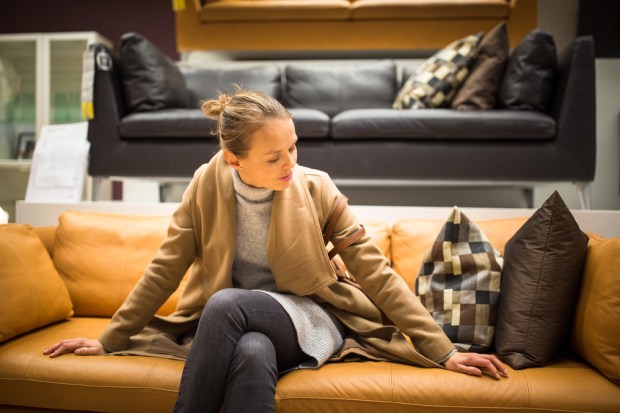How Millennials Shop For Furniture With Direct-To-Consumer Brands

Millennials value experiences over things, as the familiar digital age adage goes, but sometimes millennials do, in fact, need actual things, such as sofas, beds and tables to furnish their apartments and houses. But they still value experiences – that is, shopping experiences – as they hunt for the furniture that allows them to unwind and relax in their own homes. To reach digitally native consumers who are willing to buy bulky items without the traditional brick-and-mortar experience, direct-to-consumer (D2C) furniture retailers are adopting millennial-friendly business models.
For starters, these retailers are turning to simple web interfaces that present information in a clear way. Their designs include sites that showcase products set against white backgrounds in neat rows – with lots of space to spare. The Wall Street Journal also noted that “transparency rates highly for a typical millennial site.” In some cases, retailers are showing customers sketches of how their products will appear at their doorsteps and how many boxes their shipments will contain. Customers also love messaging that allows them to communicate with retailers: A 30-year-old sales executive told the paper, “I love the chat boxes. They’re the little thing that pops up and asks, ‘Can I help you?’”
Direct-to-consumer (D2C) furniture retailers are also adopting different business models, particularly supply chain strategies. In a typical way of doing business, BenchMade Modern Founder Edgar Blazona told the paper, a wholesaler may spend $1,000 to purchase a sofa from the manufacturer and sell it to a retailer for $2,000. That merchant might then sell that same product to a consumer for $4,000, which the wholesaler theoretically purchased for only $1,000. By taking out the intermediary, millennial-focused brands can offer products made with good materials at sensible prices, and presumably save customers more money by picking up the tab for shipping.
A twentysomething pharmacy student, as cited by WSJ, bought a sofa from Burrow for just over $1,000 and had it delivered to his door. The shipping was covered by the company, as would the return if the item didn’t work out. The consumer did end up keeping the item – and he thought the purchase was “worth a try,” he told the paper. But, for customers who do want to see and experience products in person, millennial-focused brands are still turning to brick-and-mortar – they’re just not opening stores with expansive layouts.
Instagram-Friendly Retail
The same company that delivered that sofa, Burrow, also recently opened a small store in Manhattan’s trendy SoHo neighborhood called Burrow House. The store is designed to be decidedly different than the typical brick-and-mortar store, as an experiential retail environment. Burrow CEO Stephen Kuhl told Vox in October, “Nobody really wants to go to a traditional store anymore. The best way for people to interact with your products is to have them just experience them organically.”
The store serves as a showroom of sorts, with assembled couches displayed from the walls, as well as cushions and couch legs. In addition, the store offers items that go along with the furniture showcased in the store: Shoppers can buy blankets and pillows, and can pick up tea and coffee nearby. But the store has a decidedly digital native, millennial-friendly touch. In a designated Play section, one of the company’s couches is set before a green screen background. The setup enables shoppers to share pictures of themselves trying out the furniture. Kuhl told the outlet that the section is the location’s “Instagram bait.”
Changing Millennial Needs
But direct-to-consumer furnishing brands are also changing their product selection to broaden their offerings, as young millennials grow into older millennials who are starting families. This demographic isn’t shopping just for themselves anymore: In addition to their own needs, they are shopping for the next generation. Luxury retailer Brooklinen, in one case, rolled out Brooklittles, its line of bedding for babies and very young kids.
The new offerings are said to keep the same cool, crisp and simple aesthetic for which the brand is already known. But in place of cute pictures, the first collection features gender-neutral prints, such as blue matchsticks or yellow triangles. The collection also showcases a set of sheets with a tribute to their home city, complete with taxi cabs, the Empire State Building and pretzels. There are also items such as baby blankets, baby quilts, baby swaddle sets and a stuffed llama named Lulu that serves as a mascot for the collection.
What products will be in store for the future of millennial direct-to-consumer furniture brands? Those innovations may be on the horizon. But if the past is any indication, these brands may very well continue to evolve the way that furniture is both marketed and sold.
